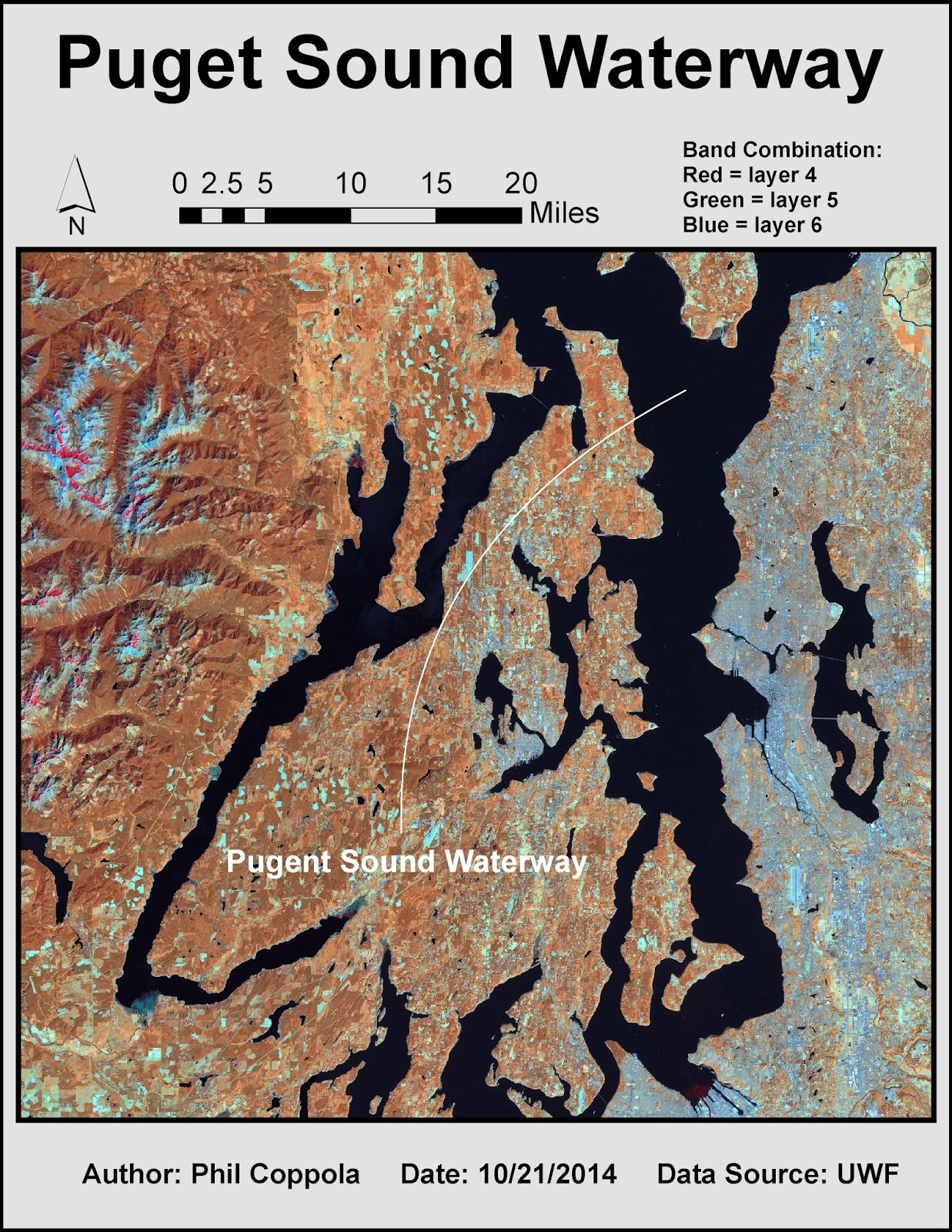Friday, October 31, 2014
Lab 9 – Accuracy of DEMs
Like any interpolated raster surface, a DEM is derived from an array of measured points, specifically elevations. What is important for interpolated surfaces is the error introduced during the interpolation process, thus the accuracy and predictive power of the DEM. The accuracy of a DEM can be determined by comparing interpolated values to known/measured co-located values. These points can be surveyed after the DEM is created or can be withheld from the interpolation process and used to validate the model. One method of collected data for DEM generation is via LiDAR. To check the accuracy of LiDAR-generated DEMs it is important to test several land cover types individually, as they may have different relative inaccuracies.
Tuesday, October 28, 2014
Module 8 Lab: Thermal & Multispectral Analysis
 |
| Multispectral image of Coastal Ecuador highlighting the color contrast of several distinct features. |
The portion of the map that I selected is an
agricultural area of the river bank. I
chose this entire area because it was a diverse area, thus providing a good
contrast of land features. There is a
freshwater river with a forested island, and on the main land is an
agricultural area surrounded by an urban area.
The band combination that was selected appropriately highlights these
different features. Red was linked to
Layer 4, Green was linked to Layer 2, and Blue was linked to layer 6 (Thermal
IR). Accordingly, the vegetated island
(high NIR, low temp) appear bright red, the urban areas to the east (low NIR,
high temp) appear bright blue, and the main river (low NIR, low temp) appears
green.
Further, shape and pattern are useful in
identifying these features. Agricultural
lands are often regular polygons (rectangles, or otherwise straight-edged) and
would be expected to appear more blue than red in my image, which is the case. The river and forested island are obvious
based on association.
Wednesday, October 22, 2014
Lab 8 – Surface Interpolation
 |
| An output from raster calculator determining the difference between two output interpolation rasters using the same input points values |
Tuesday, October 21, 2014
Module 7 Lab: Multispectral Analysis
 This weeks lab involved using multispectral analyses processes to locate specific features within aerial imagery. Generally four steps are followed: 1) examine histograms of the imagery pixel data; 2) visually examine grey scale image; 3) visually examine multispectral image; 4) use inquire cursor tool to isolate specific cell values. The following are three such examples of this process. Features are highlighted by their contrast to background features.
This weeks lab involved using multispectral analyses processes to locate specific features within aerial imagery. Generally four steps are followed: 1) examine histograms of the imagery pixel data; 2) visually examine grey scale image; 3) visually examine multispectral image; 4) use inquire cursor tool to isolate specific cell values. The following are three such examples of this process. Features are highlighted by their contrast to background features.Wednesday, October 15, 2014
Lab 7 – TINs and DEMs
 |
| Unmodified TIN |
 |
| Modified TIN with lake feature burned in |
Tuesday, October 14, 2014
Module 6 Lab: Spatial Enhancement
 |
| Image Enhancement output from ERDAS Imagine and ArcMap Processing. |
Thursday, October 9, 2014
Lab 6 – Location-Allocation Modeling
 |
| Output of new Market area coverage by distribution facilities |
Wednesday, October 1, 2014
Lab 5 – Vehicle Routing Problem
This week's lab involved solving a Vehicle Routing Problem (VRP). VRPs are used here to determine optimal routes for fleets of delivery vehicles using a single depot. Originally, the VRP solver was run with strict route zone restrictions generating an output where several orders were not filled, but profit was maximized. A second scenario (show at right) was used to allow more flexibility in routing and generated a solution in which all orders were filled. Customer service is important, thus the second scenario is the more desirable one.
Subscribe to:
Comments (Atom)


